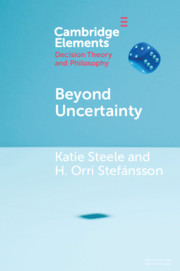Element contents
Beyond Uncertainty
Published online by Cambridge University Press: 14 August 2021
Summary
- Type
- Element
- Information
- Online ISBN: 9781108582230Publisher: Cambridge University PressPrint publication: 09 September 2021
Bibliography
- 19
- Cited by



